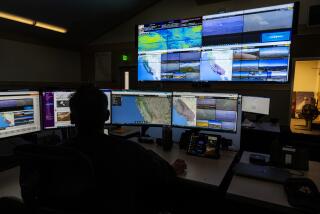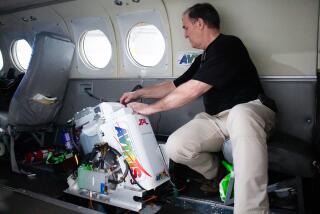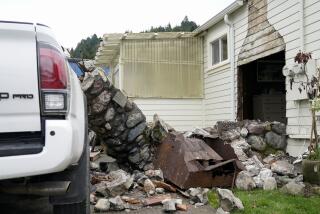Satellites Offer Precise Data on Mexico Volcano
- Share via
MEXICO CITY — Trying to monitor molten rock deep within the Earth, scientists from the United States and Mexico are looking to the skies for help.
Geologists are expanding a network of detectors that monitor Global Positioning System satellites to try to determine if the Popocatepetl volcano is expanding or contracting. That could help determine if it is likely to explode.
“The logistical difficulties are huge,” said Tim Dixon of the University of Miami. “It’s high up. It’s cold. It’s dangerous. And also, GPS until recently has been very expensive.”
With scientific-quality stations costing $30,000 apiece, investigators until now had been able to afford only two--each a plexiglass dome on a pole planted in a concrete base.
But Dixon said new, cheaper models mean “we can afford to put many more out.” Within a year, he hopes to have 10 stations, each of which can report its position within an inch or so.
“What we speculate is that if Popo was going to explode like it does every few thousand years in a massive eruption, prior to that explosion there would have to be an influx of new magma into the system,” he said.
The pressure of that magma deep within the earth might cause the surface to swell, moving the monitors a few inches farther from one another. If the monitors moved closer together, it could indicate a lessened pressure.
So far, the two instruments in operation showed a bit of deformation in mid-1996 but no movement since, despite repeated eruptions by the volcano that have sent plumes of ash and gas miles into the sky.
Dixon said the GPS equipment he uses is much more precise than that used by pilots, sailors and the military, calculating more points of reference from the satellite signals.
As a result, the location reports are not immediate.
The delay and cost, as well as the experimental nature of the system, mean officials responsible for studying Popocatepetl still rely on traditional methods: earthquake monitoring, visual position checking and analysis of gas and debris.
More to Read
Sign up for Essential California
The most important California stories and recommendations in your inbox every morning.
You may occasionally receive promotional content from the Los Angeles Times.










